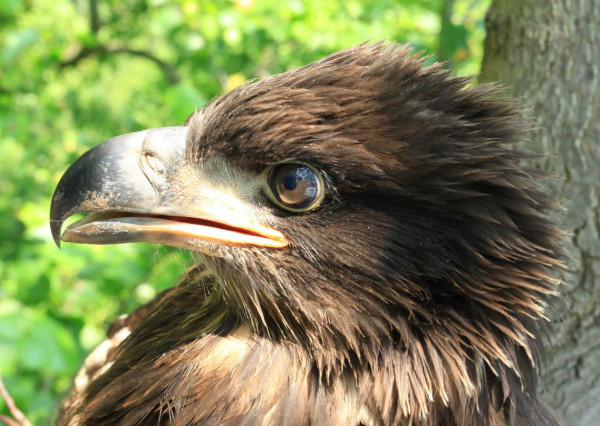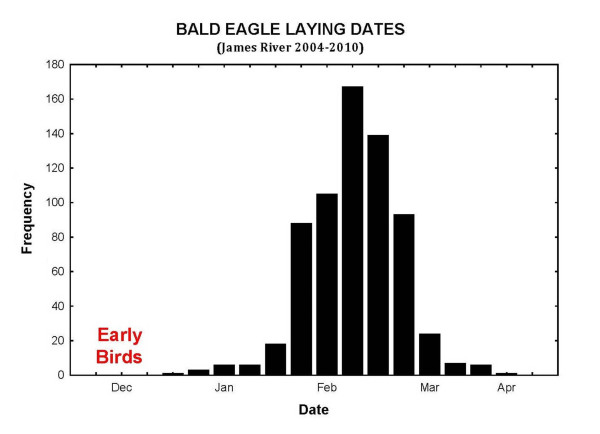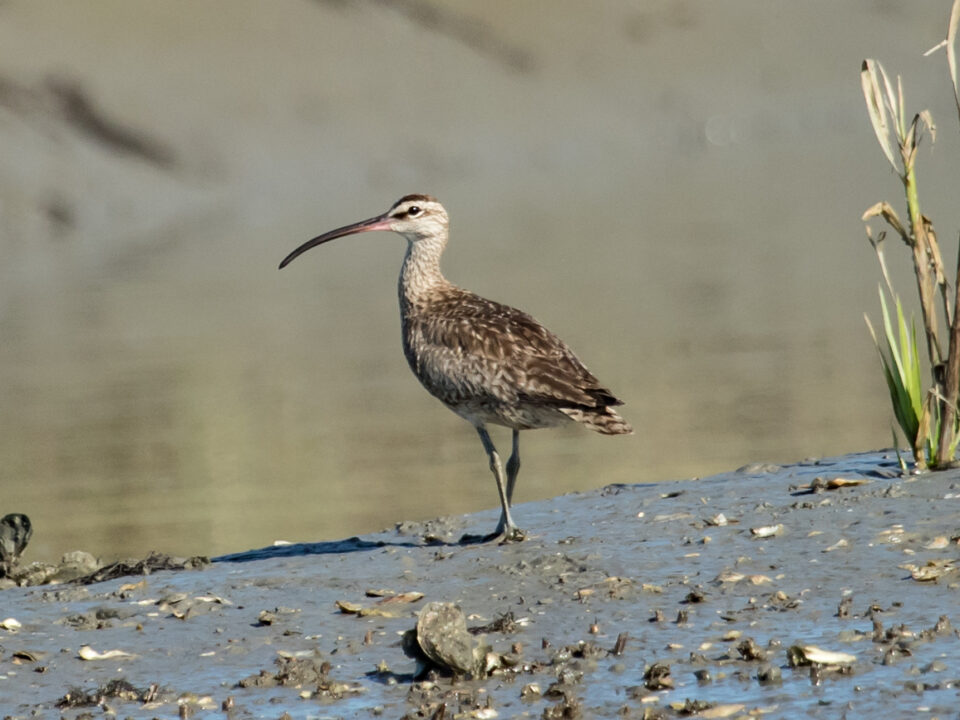The Early Birds
Camellia at Fort Story Mar 3 2014
March 7, 2014KE Remains At Swift Creek Reservoir Mar 6
March 8, 2014
Beginning in the 1980s and for many years thereafter, a pair of bald eagles nesting on Jamestown Island was the first Chesapeake Bay pair to lay eggs. Known as the “Christmas Eagles,” this pair consistently laid around the Christmas holiday, weeks before their neighbors. The southernmost of the great Chesapeake tributaries, the James River is still host to the earliest pairs in the Bay. As the population has expanded, egg dates have continued to advance to earlier dates than even the Christmas Eagles.
The 2014 bald eagle survey began with eight hours of flying along the James River on March 5th. The survey team documented several nests with young that indicate egg laying in December including one two-chick brood that was eight weeks old, a one-chick brood that was seven weeks old, and a two-chick brood that was six weeks old. The clutch for the eight-week old brood would have been laid in late November, a time when most pairs had not even initiated courtship or nest repair. They were feeding young before almost all other pairs had begun to lay eggs. The average laying date for pairs along the James River is February 6th. The early breeding date recorded this year was more than 4 standard deviation units earlier than the mean, a tremendous jump ahead of the rest of the population.

An eight-week-old eagle chick documented along the Chesapeake Bay. This bird is similar in age to the early brood documented along the James River on March 5th while almost all other pairs were incubating. Photo by Bryan Watts.
These early eagle pairs are extreme outliers within the Chesapeake Bay and each year they are clustered on the lower James between Williamsburg and Smithfield. Are these pairs just filling out the tails of the laying distribution as the population expands or is there some directional movement toward earlier laying dates? What prey are these pairs exploiting that allow them to raise young a full month earlier than the rest of the population? Why are these outliers clustered in a short reach of the James?

Frequency distribution of laying dates for bald eagles along the James River (N = 664, 2004-2010) Watts, unpublished data.
The many questions of why and how remain to be explored but, as with most things, it is the unexpected and unusual that lead to discoveries and make for a more interesting day.
Written by Bryan Watts | bdwatt@wm.edu | (757) 221-2247
March 7, 2014



